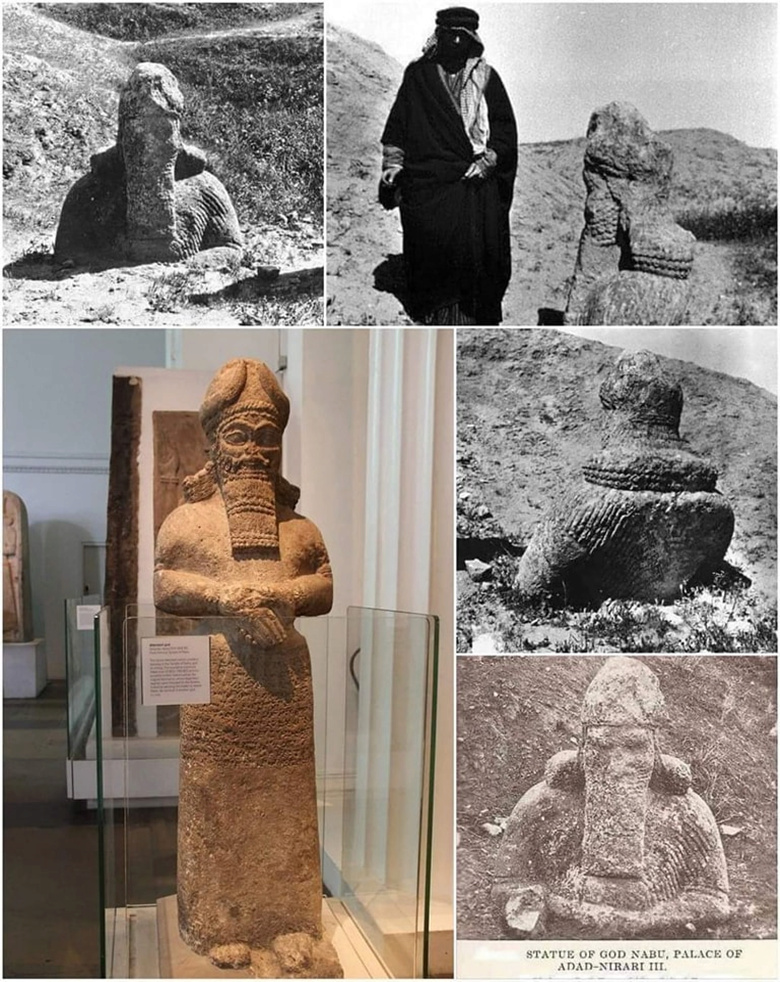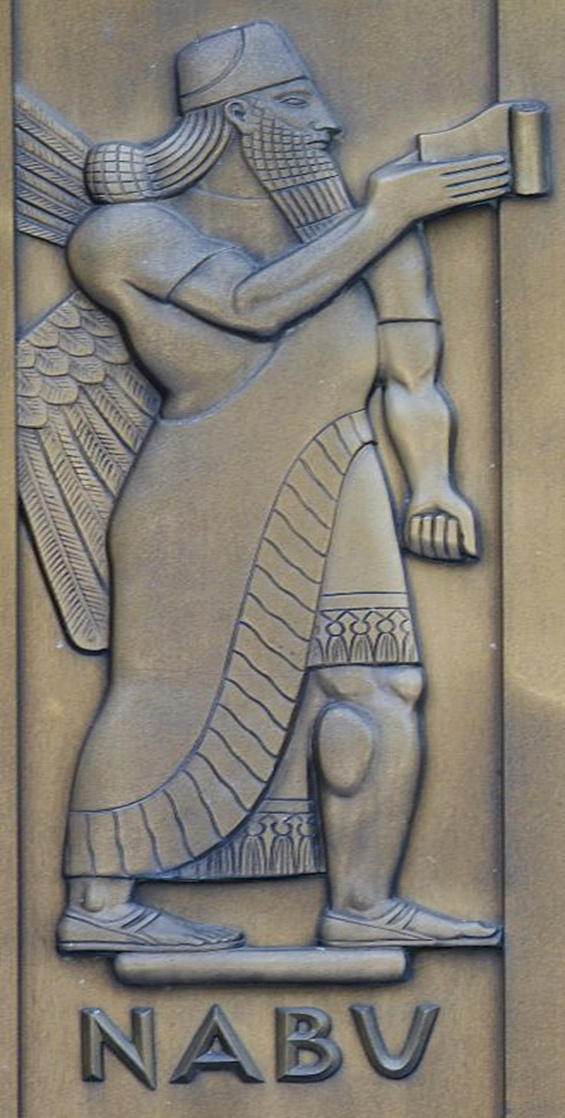Statue of Nabu from the city of Nimrud

This colossal limestone statue represents Nabu, the pagan god of wisdom and knowledge. It was found near one of the doors of the Temple of Nabu in the city of Nimrod (ancient Kalhu).
He wears the horned headdress typical of Mesopotamian gods. Eighth century BC. On display in the Assyrian Hall
Nabu is one of the ancient Iraqi deities, as he was considered a god of writing and wisdom. The Babylonians considered him a son of the god Marduk and a grandson of the god Ea.
Opinions differed regarding the origins of the worship of Nabu, while Marduk became the main head of Babylon, symbolized by the “pen” and the “mushkhushu animal.” Several temples to Nabu were erected in Iraq, the most famous of which is the Yazid Temple, in which they found the sun disc engraved on its walls. It is located in the city of Borsippa, which was considered the center of worship of this man. He was initially “Marduk’s minister” and his scribe, then became his son. Among the most important periods in which his position was strengthened were the Neo-Assyrian period and the Neo-Babylonian era. Nabu was the savior of his father Marduk from captivity on the Feast of Akitu (the Babylonian New Year), on the sixth day of the celebration. The god Nabu had three wives (Tashmitum, Nanaya, and Nisaba), and he had no children.
Naboo naming

Nabu was considered one of the most important gods of Mesopotamia. He was the son of the god Marduk, according to ancient Sumerian ideas and beliefs, and a god of writing and wisdom. At the beginning of his worship, he was a god specific to agriculture, a scribe and a messenger to the gods, the god of the pen, knowledge, and parchment, and the protector of writers and copies. The name of the god Nabu was written in syllabic form with (Nabum). This name was used in most of the eras in which his worship appeared. It was rarely written in the form of (Nabum). As for the list of gods, his name was written in the form of (Nabum), as it is believed that the name (Nabum) was known. It has been in it since the Akkadian era. This name has appeared in the documents of the Third Ur era and the Old Babylonian era, and it is believed that it changed to (Nabu) in more recent eras. The name (Nabiām) also appeared, which is a name that came late in the texts of supplications, prayers, and the texts of the Psalms. The god Nabu was known in the Torah. (Old Testament) in the name of (Nebo) (Nebo) is the Hebrew name for the god Nabu, but in Aramaic it appeared in the form (Nbw), as well as in Palmyra, Syriac, and Mandaic, and it appeared in Latin in the form (Nebus). The name of the god Nabu is derived from the Semitic origin, or the Semitic root (Nbi), meaning ( He calls), and its origin is likely to be in the Yazidi religion, and it can be interpreted with the following meanings (messenger, broadcaster, herald, announcer, informant) as long as it corresponds to one of the functions performed by the god, being the minister of the god Marduk, or by being a characteristic similar to the general noun, which is ( The caller) and if the second interpretation is supported, then it is an attribute of the god Nabu. As for the meaning of the name in the Assyrian language, it means (calling). There are other meanings for the name of the god Nabu. Among them is (the illustrious). According to the opinion of Professor Taha Baqir, the naming of the god Nabu means (appearance or speech), and it is possible that the word (prophet) came from the word (Nabu) as it is a great religious rank for his priests.
At the Iraq Museum in Baghdad, Republic of Iraq.
Source: websites

